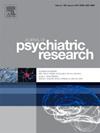Loneliness after service veteran loneliness and exclusion by veterans and nonveterans in Cyberball
IF 3.7
2区 医学
Q1 PSYCHIATRY
引用次数: 0
Abstract
Previous research indicates that many veterans experience challenges when transitioning from military to civilian life, with a significant proportion reporting feelings of social exclusion and loneliness. However, these experiences have been documented primarily through self-report surveys with limited examination of their inter-relationship. The current study addressed this gap using an experimental Cyberball paradigm designed to simulate social exclusion. Specifically, we investigated the relationship between perceived exclusion and loneliness among post-9/11 U.S. military veterans. Veteran participants (N = 191) were randomly assigned to one of four conditions in a 2 (inclusion vs. exclusion) x 2 (veteran vs. nonveteran online confederates) between-subjects design. Results revealed a significant interaction effect, with veterans reporting higher levels of loneliness when excluded by nonveteran confederates compared to when excluded by veteran confederates. Nostalgia for the military and warrior identity were each significantly associated with loneliness but did not moderate the effect of exclusion. These findings provide experimental evidence for the impact of perceived nonveteran exclusion on veteran loneliness and highlight the importance of facilitating veterans' social integration during the transition to civilian life.
《赛博球》中退伍军人和非退伍军人的孤独和排斥
先前的研究表明,许多退伍军人在从军队过渡到平民生活时遇到了挑战,其中很大一部分报告了社会排斥和孤独感。然而,这些经历主要是通过自我报告调查记录下来的,对其相互关系的研究有限。目前的研究使用一种实验性的Cyberball模式来模拟社会排斥,从而解决了这一差距。具体而言,我们调查了9/11后美国退伍军人的感知排斥和孤独感之间的关系。在2(纳入vs排除)x 2(退伍军人vs非退伍军人在线联盟)的受试者间设计中,退伍军人参与者(N = 191)被随机分配到四种条件中的一种。结果显示了显著的互动效应,退伍军人报告的孤独感水平高于被非退伍军人排除在外的退伍军人。对军人和战士身份的怀旧与孤独感显著相关,但对排他性的影响没有调节作用。这些研究结果为非退伍军人排斥感对退伍军人孤独感的影响提供了实验证据,并强调了在退伍军人向平民生活过渡过程中促进退伍军人社会融合的重要性。
本文章由计算机程序翻译,如有差异,请以英文原文为准。
求助全文
约1分钟内获得全文
求助全文
来源期刊

Journal of psychiatric research
医学-精神病学
CiteScore
7.30
自引率
2.10%
发文量
622
审稿时长
130 days
期刊介绍:
Founded in 1961 to report on the latest work in psychiatry and cognate disciplines, the Journal of Psychiatric Research is dedicated to innovative and timely studies of four important areas of research:
(1) clinical studies of all disciplines relating to psychiatric illness, as well as normal human behaviour, including biochemical, physiological, genetic, environmental, social, psychological and epidemiological factors;
(2) basic studies pertaining to psychiatry in such fields as neuropsychopharmacology, neuroendocrinology, electrophysiology, genetics, experimental psychology and epidemiology;
(3) the growing application of clinical laboratory techniques in psychiatry, including imagery and spectroscopy of the brain, molecular biology and computer sciences;
 求助内容:
求助内容: 应助结果提醒方式:
应助结果提醒方式:


